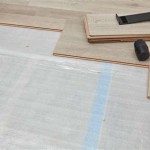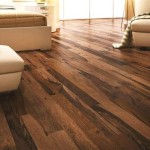How To Floor a Concrete Basement
Flooring a concrete basement transforms a cold, utilitarian space into a comfortable and functional extension of the home. A finished basement can serve as a living room, home office, playroom, or guest suite, significantly increasing a home's usable square footage and value. However, flooring a concrete basement presents unique challenges due to the inherent characteristics of concrete, particularly its susceptibility to moisture.
This article provides a comprehensive guide on how to successfully floor a concrete basement, addressing crucial considerations regarding moisture control, subfloor installation, and flooring material selection. Proper preparation and execution are essential to ensure a durable, comfortable, and long-lasting finished basement floor.
Assessing and Addressing Moisture Issues
Moisture management is paramount when flooring a concrete basement. Concrete is porous and can wick moisture from the ground even when the surrounding soil appears dry. This moisture can lead to mold growth, damage flooring materials, and create an uncomfortable living environment. Therefore, a thorough assessment of the concrete slab's moisture levels is the first crucial step.
A simple moisture test involves taping a square of plastic sheeting (approximately 1 foot by 1 foot) to the concrete floor using duct tape, sealing all edges completely. After 24-72 hours, observe the plastic sheeting. If condensation forms beneath the plastic or the concrete appears darker than the surrounding area, it indicates a moisture problem. This test should be performed in several different areas of the basement, as moisture levels may vary.
More accurate moisture testing can be conducted using a concrete moisture meter. These meters measure the moisture content within the concrete slab and provide a numerical reading. Consult the flooring material manufacturer's specifications to determine the acceptable moisture level for the intended flooring.
If moisture levels exceed acceptable limits, remediation is necessary. Several strategies can be employed to address moisture issues:
- Exterior Waterproofing: This involves excavating around the foundation and applying a waterproof membrane to the exterior walls. This is the most effective, but also the most expensive and disruptive, solution.
- Interior Waterproofing: This involves applying a waterproof coating to the interior walls of the basement. This is a less disruptive option than exterior waterproofing, but it may not be as effective in severe cases.
- Dehumidifier: Running a dehumidifier can help to reduce humidity levels in the basement, but it does not address the source of the moisture. This is best used as a supplemental measure after other waterproofing efforts.
- Vapor Barrier: Installing a vapor barrier beneath the flooring is essential even if moisture testing indicates acceptable levels. This barrier prevents moisture from rising through the concrete and damaging the flooring material.
Selecting the appropriate moisture remediation strategy depends on the severity of the moisture problem and the budget for the project. Consulting with a professional waterproofing contractor is recommended for complex or severe moisture issues.
Choosing a Subfloor System
In most cases, a subfloor system is recommended for concrete basements, even when moisture levels are within acceptable limits. A subfloor provides several advantages:
- Moisture Barrier: A subfloor further isolates the finished flooring from the concrete, providing an additional layer of protection against moisture.
- Thermal Insulation: A subfloor adds insulation, making the basement floor warmer and more comfortable, especially during colder months.
- Cushioning: A subfloor provides a more comfortable walking surface and reduces the impact of hard floors on joints.
- Leveling: A subfloor can help to level uneven concrete surfaces, providing a more consistent and stable base for the finished flooring.
Several types of subfloor systems are available for concrete basements:
- Dimpled Subfloor: This system consists of interlocking plastic tiles with dimples on the underside. The dimples create an air gap between the concrete and the subfloor, allowing moisture to evaporate. Dimpled subfloors are typically easy to install and provide good moisture protection.
- Insulated Subfloor Panels: These panels consist of a rigid foam core covered with a moisture-resistant facing. They provide excellent thermal insulation and moisture protection. Installation often requires cutting and fitting the panels to the space.
- Wood Subfloor Framing: This system involves constructing a frame of pressure-treated lumber on top of the concrete slab and filling the cavities with insulation. This provides excellent thermal insulation and a more traditional feel but requires more construction skill. Proper ventilation is critical to prevent moisture buildup within the wood frame.
- Plywood or OSB over sleepers: Sleepers are pressure treated lumber strips that are attached to the concrete. Plywood or OSB is then attached to the sleepers. This is a less common method but can be effective.
The choice of subfloor system depends on factors such as budget, desired level of insulation, moisture concerns, and skill level. Consult with a flooring professional to determine the best subfloor option for the specific basement conditions and flooring material.
Regardless of the chosen subfloor system, proper installation is crucial for its effectiveness. Follow the manufacturer's instructions carefully and ensure that all components are properly sealed and secured. Consider using a construction adhesive to further secure the subfloor to the concrete slab.
Selecting the Right Flooring Material
The choice of flooring material is another critical consideration for concrete basements. Not all flooring materials are suitable for below-grade environments due to moisture concerns and other factors. The ideal flooring material should be durable, moisture-resistant, and comfortable to walk on.
Here are some common flooring options for concrete basements:
- Luxury Vinyl Plank (LVP): LVP is a popular choice for basements due to its excellent moisture resistance, durability, and realistic wood or tile appearance. It is also relatively easy to install and maintain. LVP is available in a variety of styles and colors, making it a versatile option for different design preferences.
- Engineered Hardwood: Engineered hardwood consists of a thin layer of hardwood veneer bonded to a plywood or high-density fiberboard (HDF) core. It is more stable than solid hardwood and less susceptible to moisture damage. However, it's still important to ensure proper moisture control in the basement before installing engineered hardwood.
- Tile: Ceramic and porcelain tile are highly resistant to moisture and are a durable option for basements. Tile can be cold and hard underfoot, so consider using radiant floor heating to add warmth and comfort.
- Carpet: Carpet can provide warmth and comfort in a basement, but it is susceptible to moisture damage and mold growth. If choosing carpet, opt for a low-pile, synthetic carpet with a moisture-resistant backing. Consider using carpet tiles, which can be easily removed and replaced if they become damaged.
- Epoxy Flooring: Epoxy flooring creates a seamless, waterproof surface that is highly durable and resistant to stains. It is a good option for garages, workshops, and other high-traffic areas. Epoxy flooring can be customized with different colors and textures.
- Rubber Flooring: Rubber flooring is a durable, moisture-resistant, and slip-resistant option for basements. It is often used in gyms, playrooms, and other areas where safety is a concern.
- Concrete Staining or Polishing: If the concrete slab is in good condition, it can be stained or polished to create a decorative and durable surface. This option is relatively low-cost, but it does not provide the same level of warmth and comfort as other flooring materials.
When selecting a flooring material, consider the following factors:
- Moisture Resistance: Choose a material that is resistant to moisture and mold growth.
- Durability: Select a material that can withstand the wear and tear of a basement environment.
- Comfort: Consider the comfort of the flooring underfoot, especially if the basement will be used as a living space.
- Cost: Balance the cost of the flooring material with its benefits and longevity.
- Maintenance: Choose a material that is easy to clean and maintain.
Always consult with the flooring material manufacturer's specifications regarding installation requirements and suitability for below-grade applications.
Preparing the concrete surface before flooring installation is essential for a successful outcome. This involves cleaning the surface thoroughly to remove any dust, debris, or adhesives. Cracks and imperfections should be filled with a concrete patching compound. The surface should be level and smooth to ensure proper adhesion of the flooring material.
The process of flooring a concrete basement requires careful planning, proper preparation, and the selection of appropriate materials. Addressing moisture issues, installing a suitable subfloor system, and choosing a moisture-resistant flooring material will contribute to a comfortable, durable, and valuable finished basement.

How To Stain Concrete Basement Floor Diy Guide

Polished Concrete Flooring Options For Your Basement Duraamen

15 Diy Basement Flooring Ideas Affordable Options For Basements

A Guide To Stained Concrete Basement Floors

Diy Basement Floor Stain And Finish 2 Colors Without Etching

Bolster Your Basement Concrete Floor Coating Essentials Viking Floors

Post Flood Cleanup How To Clean A Concrete Basement Floor Csg Renovation

How To Paint A Concrete Floor In Basement Twofeetfirst Floors Remodel Diy Makeover

Marblelife Basement

Here Is Another Basement Floor With Stained Concrete A Diff Color But Conceptually It May Be Cement Floors Colors Flooring
Related Posts








